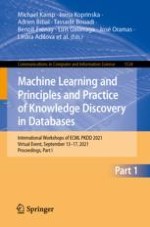2021 | OriginalPaper | Buchkapitel
This Looks Like That, Because ... Explaining Prototypes for Interpretable Image Recognition
verfasst von : Meike Nauta, Annemarie Jutte, Jesper Provoost, Christin Seifert
Erschienen in: Machine Learning and Principles and Practice of Knowledge Discovery in Databases
Aktivieren Sie unsere intelligente Suche, um passende Fachinhalte oder Patente zu finden.
Wählen Sie Textabschnitte aus um mit Künstlicher Intelligenz passenden Patente zu finden. powered by
Markieren Sie Textabschnitte, um KI-gestützt weitere passende Inhalte zu finden. powered by
